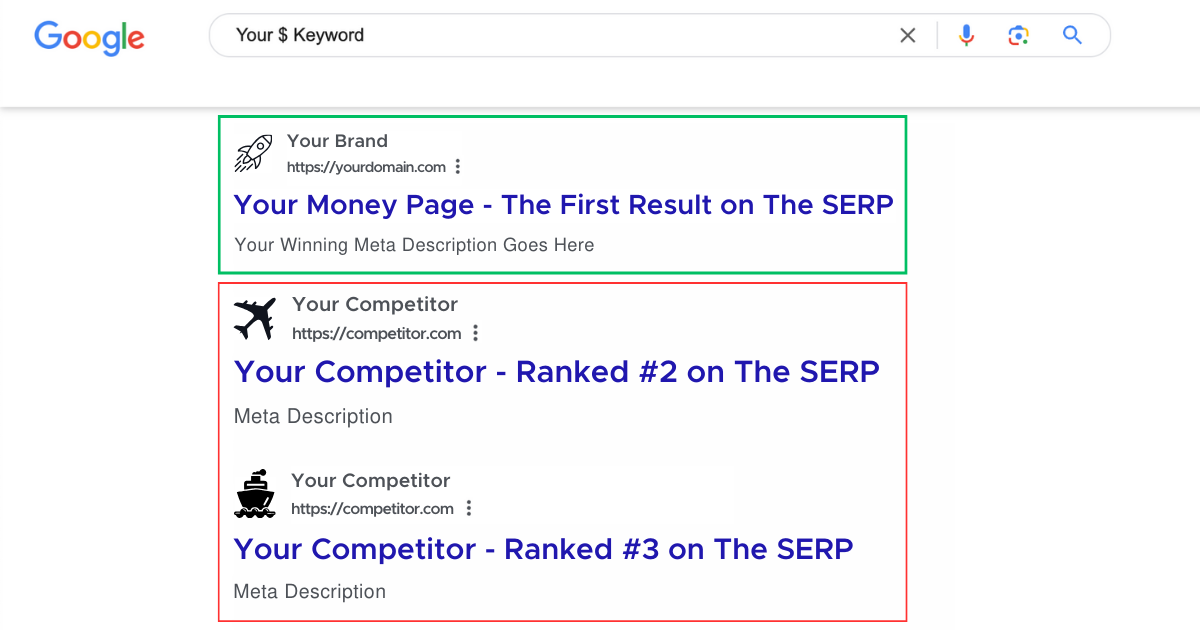What Is a Mobile Advertising ID? – Explained

Table of Contents
In the world of digital marketing, mobile advertising is a key component for businesses looking to reach their target audience effectively. To make the process more efficient, advertisers use a unique identifier known as a Mobile Advertising ID (MAID). In this article, we will dive deep into the world of mobile advertising IDs, understanding their basics, how they work, their importance, privacy concerns, and the future of this technology.
Understanding the Basics of Mobile Advertising ID
Mobile Advertising ID, also commonly referred to as Advertising ID or App ID, is a unique identifier assigned to each mobile device by its operating system. It serves as a digital fingerprint that enables advertisers to track and target users with relevant content and personalized advertisements.
Definition of Mobile Advertising ID
A Mobile Advertising ID is a random and anonymous string of characters that is associated with a specific mobile device. This identifier is generated by the operating system of the device, such as Apple’s iOS or Google’s Android, and is unique to each device. It is designed to be persistent, meaning it remains the same unless manually reset by the user.
The purpose of the Mobile Advertising ID is to provide a standardized way for advertisers to identify and track individual devices without relying on personal information such as names or phone numbers. This helps protect user privacy while still allowing advertisers to deliver targeted advertisements.
The Role of Mobile Advertising ID in Digital Marketing
The primary role of Mobile Advertising ID is to enhance the efficiency and effectiveness of digital marketing campaigns. By using this identifier, advertisers can deliver more customized content to their target audience, resulting in a higher likelihood of the user engaging with the advertisement.
For example, let’s say a user frequently visits fitness-related websites and downloads fitness apps on their mobile device. With the help of the Mobile Advertising ID, advertisers can identify this user’s interests and preferences. They can then tailor their advertisements to promote fitness-related products, services, or offers, increasing the chances of conversion and customer engagement.
Beyond personalized advertising, Mobile Advertising IDs enable advertisers to measure the performance of their campaigns, track user actions, and gather valuable data for analysis and optimization purposes.
By tracking the Mobile Advertising ID, advertisers can monitor how users interact with their ads, such as the number of impressions, clicks, and conversions. This data allows them to evaluate the effectiveness of their marketing strategies and make informed decisions to optimize future campaigns.
Furthermore, Mobile Advertising IDs can be used for audience segmentation, where advertisers group users based on their interests, demographics, or behavior. This segmentation helps in creating targeted campaigns that resonate with specific user segments, resulting in higher engagement and conversion rates.
It is important to note that Mobile Advertising IDs are subject to privacy regulations and user consent. Users have the option to reset their Mobile Advertising ID or limit ad tracking on their devices, providing them with control over their privacy and advertising preferences.
In conclusion, Mobile Advertising IDs play a crucial role in digital marketing by enabling advertisers to deliver personalized advertisements, measure campaign performance, and gather valuable user data. While providing a way to track and target users, these identifiers also prioritize user privacy and control over their advertising experience.
How Does Mobile Advertising ID Work?
Mobile Advertising IDs play a crucial role in the world of mobile advertising. They are unique identifiers assigned to each mobile device, allowing advertisers to track user behavior and deliver personalized content. Let’s dive deeper into the process of generating Mobile Advertising IDs and how they are used by advertisers.
Process of Generating Mobile Advertising IDs
During the initial setup of a mobile device, the operating system generates a Mobile Advertising ID. For Android devices, Google assigns an Advertising ID, while iOS devices receive an Identifier for Advertisers (IDFA) from Apple. These IDs serve as a digital fingerprint for each device, allowing advertisers to distinguish and track individual users.
The Advertising ID remains constant unless the user explicitly chooses to reset or limit its usage. This ensures that advertisers can rely on the consistency of the ID to track user interactions and deliver targeted content.
How Mobile Advertising IDs are Used by Advertisers
Advertisers leverage Mobile Advertising IDs to create highly targeted advertising campaigns. By capturing the Advertising ID when users interact with an ad, advertisers can collect valuable data on user behavior, interests, and preferences.
This data provides advertisers with insights into the demographics, browsing habits, and purchasing patterns of their target audience. Armed with this information, advertisers can optimize their campaigns and deliver personalized content that resonates with individual users.
Moreover, the ability to track user behavior and interests allows advertisers to retarget users who have shown previous engagement. For example, if a user clicks on an ad for a travel app but doesn’t make a purchase, the advertiser can retarget that user with similar ads or exclusive offers to encourage conversion.
By delivering personalized content to users who are more likely to engage, Mobile Advertising IDs significantly improve the effectiveness of advertising campaigns. This targeted approach leads to higher conversion rates and a better return on investment for advertisers.
It’s important to note that while Mobile Advertising IDs provide valuable insights for advertisers, user privacy is also a top priority. Advertisers must adhere to strict privacy policies and regulations to ensure the responsible and ethical use of Mobile Advertising IDs.
In conclusion, Mobile Advertising IDs are essential tools that enable advertisers to track user behavior, gather valuable data, and deliver personalized content. By harnessing the power of Mobile Advertising IDs, advertisers can optimize their campaigns and provide users with a more tailored and engaging advertising experience.
The Importance of Mobile Advertising ID
Personalized Advertising Experience
Mobile Advertising IDs play a critical role in delivering personalized advertising experiences to users. By tracking user behavior and preferences, advertisers can ensure that the content they deliver is relevant and tailored to each individual’s interests and needs.
This personalization leads to a more engaging and enjoyable experience for users, fostering a positive brand perception and increasing the likelihood of conversion.
For example, imagine a user who frequently searches for recipes online. With the help of Mobile Advertising IDs, advertisers can identify this user’s interest in cooking and deliver targeted ads for kitchen appliances, cooking classes, and recipe books. This level of personalization not only enhances the user’s experience but also increases the chances of them taking action and making a purchase.
Furthermore, Mobile Advertising IDs allow advertisers to understand the user’s preferences and deliver ads at the right time and place. For instance, if a user frequently visits fitness-related websites and apps, advertisers can use their Mobile Advertising IDs to deliver ads for workout equipment or fitness apps when the user is most likely to be interested and receptive.
Improved Ad Targeting and Measurement
Mobile Advertising IDs enable advertisers to target specific user segments based on their demographics, interests, and previous interactions. This level of precision targeting improves the efficiency of advertising campaigns, reducing wasted impressions and increasing the chances of conversion.
For instance, a clothing retailer can use Mobile Advertising IDs to target users who have previously expressed an interest in fashion, ensuring that their ads reach the most relevant audience. This targeted approach not only increases the chances of conversion but also helps advertisers optimize their advertising budgets by avoiding unnecessary ad spending on users who are less likely to be interested in their products.
In addition to improved targeting, Mobile Advertising IDs provide advertisers with valuable performance metrics, such as click-through rates and conversion rates. These insights enable advertisers to measure and optimize the effectiveness of their advertising strategies, ensuring they allocate their resources efficiently.
By analyzing the data collected through Mobile Advertising IDs, advertisers can identify which ads are resonating with their target audience and make data-driven decisions to refine their campaigns. For example, if an ad targeting young adults is not generating the desired click-through rate, advertisers can use the insights from Mobile Advertising IDs to adjust their messaging or creative approach to better appeal to this demographic.
Moreover, Mobile Advertising IDs also allow advertisers to attribute conversions to specific ads or campaigns. This level of measurement and attribution helps advertisers understand the true impact of their advertising efforts and make informed decisions about where to allocate their resources for maximum return on investment.
Privacy Concerns Related to Mobile Advertising ID
Data Privacy and Security Issues
As with any technology that involves user data, Mobile Advertising IDs raise privacy concerns. Advertisers have access to a wealth of information about users, including their interests, preferences, and sometimes even personal details. Advertisers must handle this data responsibly, ensuring proper security measures and data protection protocols are in place.
How Users Can Control Their Mobile Advertising ID
Users can exercise control over their Mobile Advertising IDs. On most devices, users can reset their advertising identifier or limit ad tracking altogether. This allows users to protect their privacy and minimize the collection of their data for advertising purposes.
Future of Mobile Advertising ID
Emerging Trends in Mobile Advertising
The field of mobile advertising is continuously evolving, and so is the role of Mobile Advertising IDs. One notable trend is the integration of Mobile Advertising IDs with cross-device tracking, allowing advertisers to understand and target users across multiple devices seamlessly.
Another emerging trend is the use of Machine Learning and AI algorithms to analyze Mobile Advertising ID data, providing advertisers with deeper insights and more accurate predictions about user behavior and preferences.
Impact of Regulatory Changes on Mobile Advertising ID
Regulatory changes, such as the General Data Protection Regulation (GDPR) in Europe and similar privacy regulations worldwide, have prompted advertisers to implement stricter privacy measures and obtain explicit consent from users. These changes have a direct impact on how Mobile Advertising IDs can be used and highlight the importance of transparency and user control in digital advertising.
As the digital advertising landscape continues to evolve, Mobile Advertising IDs remain an essential tool for advertisers to deliver personalized and targeted advertisements while respecting user privacy. By understanding the basics, how they work, and the potential privacy concerns, both advertisers and users can navigate this technology responsibly and reap the benefits it offers.
Share

About
Walter Voronovic shares accurate, honest & pragmatic information on how to use the internet to build profitable digital business assets.


